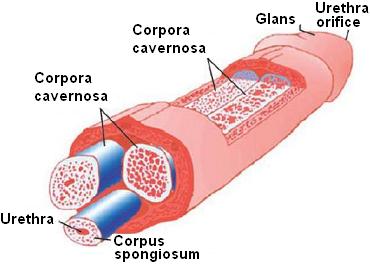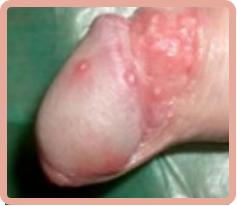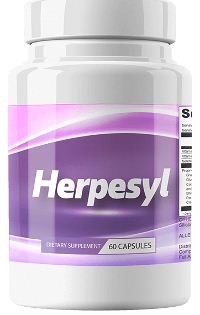If you are suffering from herpes on penis and you are looking for an effective treatment for this disease, you have come to the right place.
In this article you will know a treatment for genital herpes on penis that eliminates the virus that causes the disease from your body and you will be able to access an anti-herpes product that prevents outbreaks.
The writing, besides guiding you on the treatment, gives you valuable information about the cause of the disease and how you can spread it.
I have also included information about the human penis at the beginning of the article which will help you understand the need to treat your disease immediately.
If you don’t have enough time to read the whole article, you can choose the part of the table of contents that interests you the most.
The human penis [↑]
Penis is the external male sexual organ that in the reproductive stage has the function of ejaculating the semen produced by the internal reproductive organs of the man in the vagina of the woman.
In addition to its sexual and reproductive functions, the penis also has an excretory function because urine flows out through it.
The human penis, unlike the penis of some species of mammals, is not provided with bone. It achieves the necessary rigidity by means of a blood-filling mechanism thanks to the cavernous tissues that form its internal structure.
Penis structure
Three cylinders of erectile tissue are located longitudinally inside the penis. Two of them are located side by side in the upper part and the third in the lower part surrounding the urethra.
The upper cylinders are called corpora cavernosa[1] and the lower cylinder surrounding the urethra is called the corpus spongiosum.
The corpus spongiosum widens towards the end of the penis forming a very sensitive conical structure called the glans, balanus or head of the penis.
The corpora cavernosa and corpus spongiosum are surrounded by connective tissue covered by thin skin that extends beyond the beginning of the glans.
The part of this skin that covers the glans and can be retracted backwards is called the foreskin. The foreskin is attached to the underside of the glans by means of the frenulum.

Parts of the man´s penis.
Functioning of the penis
The penis is normally in a state of flaccidity to perform its excretory function.
In this state the penis hangs in front of the scrotum and its length is approximately equal to that of the scrotum.
During an erection, the penis is larger in length and thickness than in a flaccid state, it acquires an erect position that varies from one individual to another and its tissues harden.
One of the functions of the corpus spongiosum during erection is to prevent the urethra from closing to facilitate ejaculation and excretion of urine.
Penile erection is a process initiated by tactile, visual, or mental stimuli.
Inside the corpora cavernosa and corpus spongiosum there is a central artery that supplies oxygenated blood from the heart to the erectile tissues so that the penis reaches its erection. 90% of the blood circulates through the corpora cavernosa.
As the penis increases in size, the veins of the erectile tissue compress, making it difficult for blood to escape.
For this reason, the volume of blood entering the penis is greater than the volume of blood leaving the penis until it reaches its maximum size in the erect state. When this happens, the inlet and outlet of blood are balanced.
The size of the penis is measured in the erect state and varies from one individual to another.
Most men do not want to have a penis that is smaller than the average size, and those who have a penis that is larger than the average are often proud of this condition.
Men with small penises often avoid letting others know about their condition.
Affections of the penis
Regardless of the size, the most important thing in relation to the penis is its health and functionality.
There are diseases and dysfunctions that affect the penis, among which are included:
- Balanitis.
- Phimosis.
- Paraphimosis.
- Erectile dysfunction.
- Pearled papules.
- Herpes.
Balanitis[2] is the inflammation of the glans.
Usually this disease is associated with the inflammation of the foreskin. When this occurs it is called balanopostitis.
Phimosis[3] is the narrowness of the foreskin that prevents its retraction so that the glans is totally uncovered in a state of flaccidity or erection.
This condition is very frequent in children, but it disappears towards adolescence. When this does not occur, a surgery called circumcision must be performed.
We can define paraphimosis as the hanging of the glans due to the manipulation of the foreskin in a situation of phimosis or inflammation of the glans or foreskin.
Erectile dysfunction is the inability to achieve or maintain an erection of the penis. Before the current name, this condition was called sexual impotence.
The causes of erectile dysfunction are many and include psychological and physiological factors.
This condition requires specialized medical treatment.
Pearly papules are small bumps that appear in rows at the base of the glans with a more intense color than the skin. They are hereditary and not malignant.
Herpes on the penis is a viral disease to which I dedicate the following sections.
Herpes on penis [↑]
Herpes on the penis is a contagious and recursive disease. It is caused by a virus and takes place in six phases that include the formation of painful blisters on the penis filled with a clear liquid.

Photo of herpes on penis.
The blisters burst and painful sores form instead, covered with scabs.
After a few days the scabs fall off without leaving scars and the penis returns to its normal state until the next cycle of the disease.
Blisters can form anywhere on the penis. The glans and foreskin are the most frequently affected areas.
When herpes infects the glans, the disease is called herpes on glans or herpes on penis head. When it infects the entire surface of the penis, we refer to the disease as herpes around the penis.
Herpes on glans usually causes balanitis, balanopostitis, urinary tract infection, dysuria and balanopreputial adhesions which consist of the union of the glans with the foreskin.
Balanitis due to herpes (balanitis from herpes) is very painful and can become complicated in diabetics.
Dysuria is a symptom of urinary tract infection that is perceived by the sufferer as stinging or burning when urinating. It can be felt at the beginning, at the end, or during urination.
Herpes on the penis opens the door to other sexually transmitted diseases.
Cause of herpes on the penis [↑]
The cause of genital herpes on the penis is the herpes simplex virus.
This virus is also the cause of herpes on scrotum and other parts of the body.
There are two types of this virus. Herpes simplex virus type 1 usually causes herpes on parts of the body above the waist, such as the mouth, nose, face, and eyes, although it can also spread to the genitals.
Herpes simplex virus type 2 is the primary cause of herpes on the genitals and nearby areas, although it can also infect areas of the body above the waist and cause herpes in those areas.
There is no difference between the signs and symptoms of herpes caused by a type 1 virus and those caused by a type 2 virus in the same part of the body. The type of virus cannot be determined by visual examination; it requires a laboratory test.
Anyone infected with this virus can have a herpes outbreak at any time. This depends on several factors, including the strength of the immune system, diet, and lifestyle.
I have dedicated an article to the diet for herpes sufferers which will be very useful for you to read.
Ways of infection of the penis with the herpes virus [↑]
The herpes simplex virus is very contagious and is transmitted by contact. It is not transmitted by blood transfusions, nor is it hereditary.
A pregnant mother can infect her child at birth only if at the time of birth she has a herpes outbreak or the virus is active in her genitals and the baby has contact with the virus.
If you are male, the main ways you can get herpes on your penis are as follows:
- You have penetrative sex with a person who has a genital herpes outbreak.
- You have unprotected sex through penetration with a person infected with the herpes simplex virus who does not have an outbreak, but the virus is active in his or her genitals.
- You practice oral sex by fellatio or irrumation and the person who stimulates your penis with the mouth has an outbreak of oral herpes or on the lips.
- You can also become infected if the person who practices fellatio or irrumation does not have an outbreak of oral herpes, but has the virus active in the mucous membranes of the mouth.
- Your penis comes in contact with another area of your body with an outbreak of herpes simplex.
- You have a herpes outbreak on your upper body, touch this area with your hands, and then manipulate your penis.
- Your hands touch objects that have previously come into contact with the herpes simplex virus and then manipulate your penis without washing your hands.
There are many cases of people infected with the herpes simplex virus who don’t know it because they’ve never had an outbreak. These people can transmit the virus to you and are included in the transmission ways described.
Preventing herpes outbreak on penis [↑]
Herpes outbreaks on the penis are common in many men infected with the herpes simplex virus.
Medications to prevent outbreaks have adverse effects and are based on preventing the growth of the viral population.
An alternative to the use of antiviral drugs is the strengthening of the immune system to fight the herpes virus and prevent outbreaks.
This product is available as a dietary supplement. Visit its official website by clicking on the image and know the advantages of its consumption.
Treatment of herpes on penis [↑]
There is no single treatment for herpes on penis. Existing treatments can be divided into three broad groups, depending on the health care approach:
- Treatments of conventional medicine.
- Treatments based on alternative medicine.
- Integrative treatments that combine the use of drug with alternative medicine procedures.
Treatments of conventional medicine [↑]
The most common conventional medical treatments are based on the use of antiviral agents, that is, drugs that stop the growth of the viral population and therefore help to reduce the time of the outbreak.
Among the most commonly used antiviral agents are acyclovir, famciclovir and valaciclovir, whose respective trade names are Zovirax, Famvir and Valtrex.
Acyclovir is available in pharmacies in various forms including ointments, creams, tablets and injections.
If using the topical treatment option, you should choose the acyclovir ointment, not the cream.
Acyclovir tablets and the remaining two antiviral agents help reduce the time of herpes outbreaks, but they have adverse health effects.
For this reason, you should not take tablets of an antiviral agent unless your doctor has told you to.
The main disadvantage of treating genital herpes on penis with an antiviral agent is that it does not kill the virus or prevent the disease from recurring.
Alternative medicine treatments [↑]
Alternative medicine is based on approaches to human health care based on the use of unconventional products and practices. It includes natural remedies and practices such as acupuncture and ozone therapy.
Most alternative medicine-based treatments for genital herpes on the penis are aimed at relieving the discomfort of the disease or strengthening the immune system to prevent outbreaks, shorten their duration or reduce their intensity.
Alternative medicine treatments do not remove the herpes simplex virus from your body.
Integrative treatments [↑]
Integrative treatments combine the use of conventional and alternative medicine.
There are currently several integrative herpes treatments that are effective against genital herpes on penis.
This protocol was conceived by a British doctor to cure his daughter of genital herpes and has been used by thousands of people in many countries around the world.
The greatest advantage of this treatment over others is that it eliminates the virus from your body completely and therefore you will never suffer from the disease again.
The Ultimate Herpes Protocol divides treatment into three stages.
The first stage is aimed at strengthening your immune system, the second is aimed at destroying the protein layer that protects the virus from the action of the immune system and the third is designed to prevent the reproduction of the virus.
This treatment has a maximum duration of 60 days and you can apply it yourself following the manual written by Melanie Addington.
The manual has been translated into Spanish and French.
You can download the manual in English from here.
If you are a Spanish speaker, you can download the manual in Spanish here.
If you are French-speaking, you can download the Ultimate Herpes Protocol in French here.
Final notes [↑]
In this article you have accessed information about herpes on penis including available treatments for this annoying disease.
Of all the treatments discussed, the only one that eliminates the virus from your body is The Ultimate Herpes Protocol.
If you found the article useful, share it with your friends on social networks so that they too can benefit from the information it contains.
References:
1. ↑ Corpus cavernosum. Wikipedia. https://en.wikipedia.org/wiki/Corpus_cavernosum_penis
2. ↑ Rothfeld, G. and Romaine, D. (2005). The Encyclopedia of Men´s Health. Amaranth: New York.
3. ↑ Phimosis. Merck Manual. https://www.merckmanuals.com/home/men-s-health-issues/penile-and-testicular-disorders/phimosis-and-paraphimosis

Leave a Reply